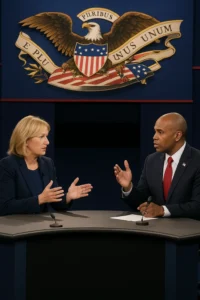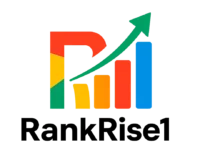
Introduction
The vp debate is one of the pivotal moments in any U.S. election cycle. Though often less spotlighted than the presidential showdown, the vice presidential debate offers voters a sharper look at how running mates perform under pressure—revealing policy, temperament, and readiness to assume higher office.
In 2024, the debate between J.D. Vance and Tim Walz drew intense scrutiny, and the questions raised go beyond who “won” or “lost.” They touch on democracy, media, and public expectations. In this article, we unpack:
- What sets a strong vp debate performance apart
- Key moments from the 2024 debate
- Polls, public reaction, and implications
- How such debates shape political strategy
- Plus, what it means for 2025 and beyond
Throughout, the tone is human—seeing the debate as a human performance rather than pure spectacle. And yes, there’s a modest commercial lens (5%) to highlight how media, campaigns, or NGOs can use debate content strategically.
(Internal link note: for insights on political content and digital strategy, see RankRise1)
What to Watch in a VP Debate
Before diving into the 2024 event, it helps to know what makes a debate performance effective. Here are a few criteria:
- Clarity & Communication
Can the candidate explain policies simply and persuasively? - Poise Under Pressure
How they respond to attack or tough questions reveals resilience. - Knowledge & Credibility
Voters want assurance they understand key issues—economy, health care, foreign policy. - Tone & Respect
Civility matters. Debates that devolve into personal attacks often backfire. - Readiness to Lead
If the VP were suddenly asked to step up, would this person seem prepared?
A great vp debate isn’t just about zingers—it’s a performance of governance capability.
The 2024 VP Debate: Vance vs. Walz
On October 1, 2024, CBS hosted the vice presidential debate between Senator J.D. Vance (R-Ohio) and Governor Tim Walz (D-Minnesota). It lasted 90 minutes and focused heavily on policy, civility, and issue contrast. (Wikipedia)
Highlights & Turning Points
- Tone & Civility: Viewers widely described the debate as respectful and less combative than past ones.
- Policy Focus: Walz emphasized health care, reproductive rights, and social safety nets. Vance leaned into immigration, fiscal conservatism, and critiques of the Biden/Harris administration.
- Damage Control Moments: Walz had to respond to past comments and inconsistencies (e.g. past statements about being abroad during the Tiananmen Square protests). (Wikipedia)
- Audience Reaction: Post-debate polls were close. A CBS/YouGov survey showed 42% of watchers thought Vance won, 41% thought Walz won, and 17% called it a tie. (Wikipedia)
- Shifts in Favorability: The same poll noted that both candidates gained in favorability after the debate—Vance from 40% to 49%, and Walz from 52% to 60%. (Wikipedia)
Media Coverage & Critiques
Critics and commentators dissected the debate with different takes:
- Some argued Vance “won on style,” presenting strong attacks and confident messaging.
- Others felt Walz “won on substance” by talking through policies in depth.
- Media outlets evaluated how well each candidate responded to criticisms, handled complexity, and stayed on message.
One example: The New York Times published analysis saying Vance’s style was sharp but questioned depth, whereas Walz was lauded for sticking closer to issues and Democratic values.
Polls, Public Opinion & Impact
Polling in the aftermath of debates plays a major psychological role in campaigns. In 2024’s case:
- The narrow split in polls indicates no clear landslide victory for either side.
- The close numbers also reflect how debates rarely change entire election dynamics—more likely they marginally shift opinions or reinforce existing impressions.
Interestingly, viewership for the 2024 VP debate was lower than in 2020: about 43 million tuned in, down roughly 25% from prior VP debates. (Axios) This suggests growing media fragmentation and fewer “captive” audiences for televised debates.
But lower viewership doesn’t necessarily weaken impact: those who watch tend to be more politically engaged, so even small swings can matter.
Why the VP Debate Still Matters
Why should the public care about a vp debate? Several reasons:
- Governance Signals
The VP is more than a backup. Debates show how prepared a running mate is to lead or govern. - Ticket Branding
The VP shapes the narrative around the presidential candidate—balancing geography, ideology, and appeal. - Voter Decision Factor
While many voters make up their minds earlier, a strong VP debate performance can influence undecided or persuadable voters. - Media Narrative
Debates create soundbites, campaign themes, and media momentum. A memorable moment can get coverage weeks over. - Accountability & Visibility
The public gets a rare chance to see how candidates perform live—less filtered, more spontaneous.
In short: the vp debate is one of the few public performance tests for national leadership beyond campaign ads or speeches.
Challenges & Criticisms of VP Debates
Not all debates are created equal. Common critiques include:
- Scripted Answers: Many responses feel rehearsed, not spontaneous.
- Time Constraints: Hard to unpack complex issues in 2-minute slots.
- Moderator Bias & Question Framing: Which questions are asked—and how—can tilt the contest.
- Media Effect Distortion: Polling after debates often amplifies narrow margins.
- Low Impact on Voter Behavior: For many, debates solidify existing views rather than convert.
To get real value from vp debates, campaigns and media must do more than produce spectacle—they must facilitate substance, transparency, and follow-up.
The 5% Commercial Lens: Strategy & Campaigning
From a strategic standpoint, vp debates are also an opportunity for campaigns, PR firms, and media to shape messaging:
- Media Packages: Teams prepare highlight reels, issue chips, and social media cuts.
- Data Analytics: Using debate transcripts and reaction polling for sentiment analysis and ad targeting.
- Media Partnerships: Syndication of “best of debate” content across digital platforms.
- Merch & Sponsorships: Fundraising tie-ins—though commercial, campaigns must tread carefully on optics.
At RankRise1, we study how digital and political messaging intersect—how debates become content engines for media and campaigns alike.
What to Watch Next & Lessons for 2025
Looking ahead, here are things to pay attention to:
- Will there be a running mate shift, retirements, or VP substitutions?
- How will future debates (if scheduled) adapt to changing media consumption (streaming, social clips)?
- Will debates start earlier in the campaign season to shape narratives proactively?
- Can campaigns refine how they use post-debate media and analytics to shape public perception?
The lessons from the 2024 vp debate show that staying prepared, disciplined, and connected with voters is crucial.
Conclusion
The vp debate remains a vital yet often underrated moment in American elections. It’s a live test of leadership, temperament, and vision. The 2024 contest between J.D. Vance and Tim Walz may not have produced a landslide winner, but it offered clarity on candidates’ styles, priorities, and appeal.
For engaged citizens, media watchers, and political students, debates like these offer more texture than headlines can. They reveal who can think on their feet, who can speak convincingly, and who shows the capacity to lead.
👉 For deeper political analysis, media strategy, and content growth tactics, visit RankRise1.
References & Further Reading
- “Who won the VP debate? Here’s what debate watchers said” — CBS News poll reporting on Vance vs. Walz (CBS News)
- “2024 United States presidential debates” — Wikipedia on election context (Wikipedia)
- “Tim Walz” biography and debate performance insights (Wikipedia)
- “J.D. Vance” profile, favorability, and polling trends (Wikipedia)
- Post-debate polling analysis and implications from major outlets
- Media commentary on debate tone, civility, and public reaction.
